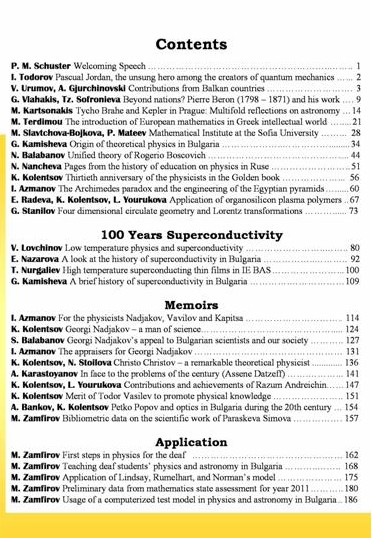|
|

|

|
|
|
Elena Nazarova Georgi Nadjakov Institute of Solid State Physics, Bulgarian Academy of Sciences 72 Tzarigradsko Chaussee Blvd., 1784 Sofia, Bulgaria The 100-th anniversary of the discovery of superconductivity is the cause to take a look at the history of Low Temperature Physics and Superconductivity in Bulgaria. It begins with the establishment of Low Temperature Laboratory at the former Physical Institute with Atomic Scientific Experimental Base in 1963. Three main stages exist in the nearly half century history of the Bulgarian Low Temperature Physics. The first period, which is about ten years, is connected with elaboration of technology for production and conservation of liquid nitrogen and helium. The second period (1973 - 1986) is characterized with investigations of conventional superconductors: the “spin-glass” state, coexistence of antiferromagnetic and superconducting phases, AC losses in type II superconductors etc. The third period is initiated by the discovery of non-conventional high temperature superconductors. The good perspectives for practical application of “nitrogen” superconductors stimulated many scientific organizations to start experimental and theoretical research on this topic. Bulgaria developed its own specialists on superconductivity based on international collaboration. Many of them worked and others still work at the authoritative centers of superconductivity all over the world.
Keywords: superconductivity, Bulgaria, main, stages, achievements


Bulgarian Academy of Sciences 72 Tsarigradsko chaussee blvd. BG-1784 Sofia, Bulgaria
Phone: +359 2 979 58 31; GSM +359 899 75 05 90
Created: 29 September 2011 |